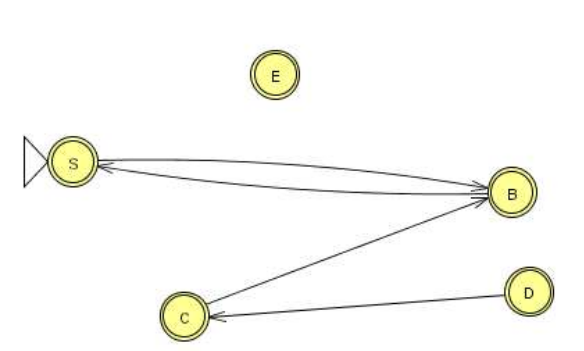Transforming CFGs (2)
<< What does it mean “without restricting the power of CFGs”? >>
Substitution Theorem (1)
Substitution Theorem (2)
Substitution Theorem Example
<< Question: Why don’t we also delete B rules? >>
Substitution Theorem Example
What was the point to this? Look at derivations.
Useless Productions (1)
We want to eliminate both types of useless production (ones that can’t be reached, and ones that don’t terminate).
Theorem: (useless productions)
Process (1)
To Remove Useless Productions:
Let G=(V,T,S,P).
NOTE: Now need to get rid of productions we can’t use.
Example (1)
Process (2)
Example (2)
Example (3)
Removing λ Productions
NOTE: Last time talked about simpler CFG that had no λ productions, now we will show how to get rid of them.
Process: Removing λ Productions
Example: Step 2
Example: Step 3
NOTE: Don’t add A→λ!
Unit Productions
This becomes: A→a∣ab
Unit Productions (2)
But we didn’t get rid of unit productions!
Removing Unit Productions
Process
Example (1)
Unit Production Dependency Graph:
Example (2)
Theorem
Chomsky Normal Form (CNF)
Theorem:
Any CFG G with λ not in L(G) has an equivalent grammar in CNF.
Example (1)
Example (2)
Greibach Normal Form (GNF)
This is like an s-grammar (or simple grammar), except the s-grammar definition includes a further restriction that any pair (A,a) can occur at most in one rule.
This is so that you wouldn’t have to backtrack (only one choice to match the derivation of a string). So it is very restrictive.
